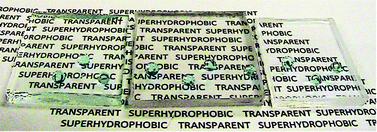Bioinspired self-cleaning surfaces with superhydrophobicity, superoleophobicity, and superhydrophilicity
Abstract
Self-cleaning methods currently employed are based on understanding of the functions, structures, and principles of various objects found in living nature. Three types of surfaces, including superhydrophobic, superoleophobic, and superhydrophilic, offer solutions to keep a surface clean. In this review article, an overview of self-cleaning surfaces inspired by nine biological objects is provided: lotus leaves, rice leaves, cicada wings, butterfly wings, snail shell, fish scale, shark skin, pitcher plant, and photosynthesis. These surfaces exhibit special properties such as low adhesion, low drag, anisotropic wetting, anti-reflection, directional adhesion, anti-fouling, photocatalysis, self-sterilizing, and anti-fogging. We discuss the differences between the superhydrophobic and superhydrophilic surfaces and perspectives for self-cleaning surfaces in the future.


 Please wait while we load your content...
Please wait while we load your content...